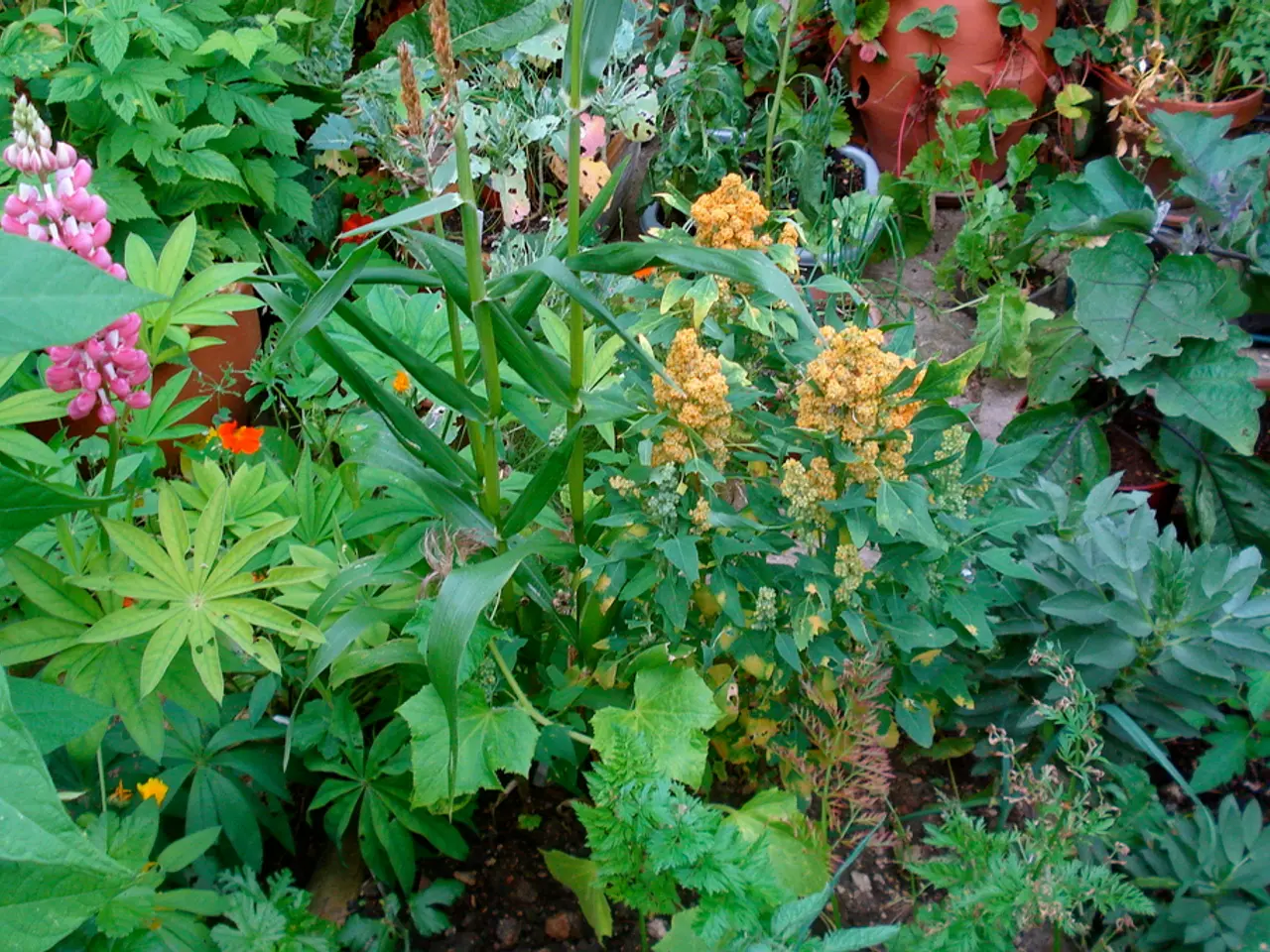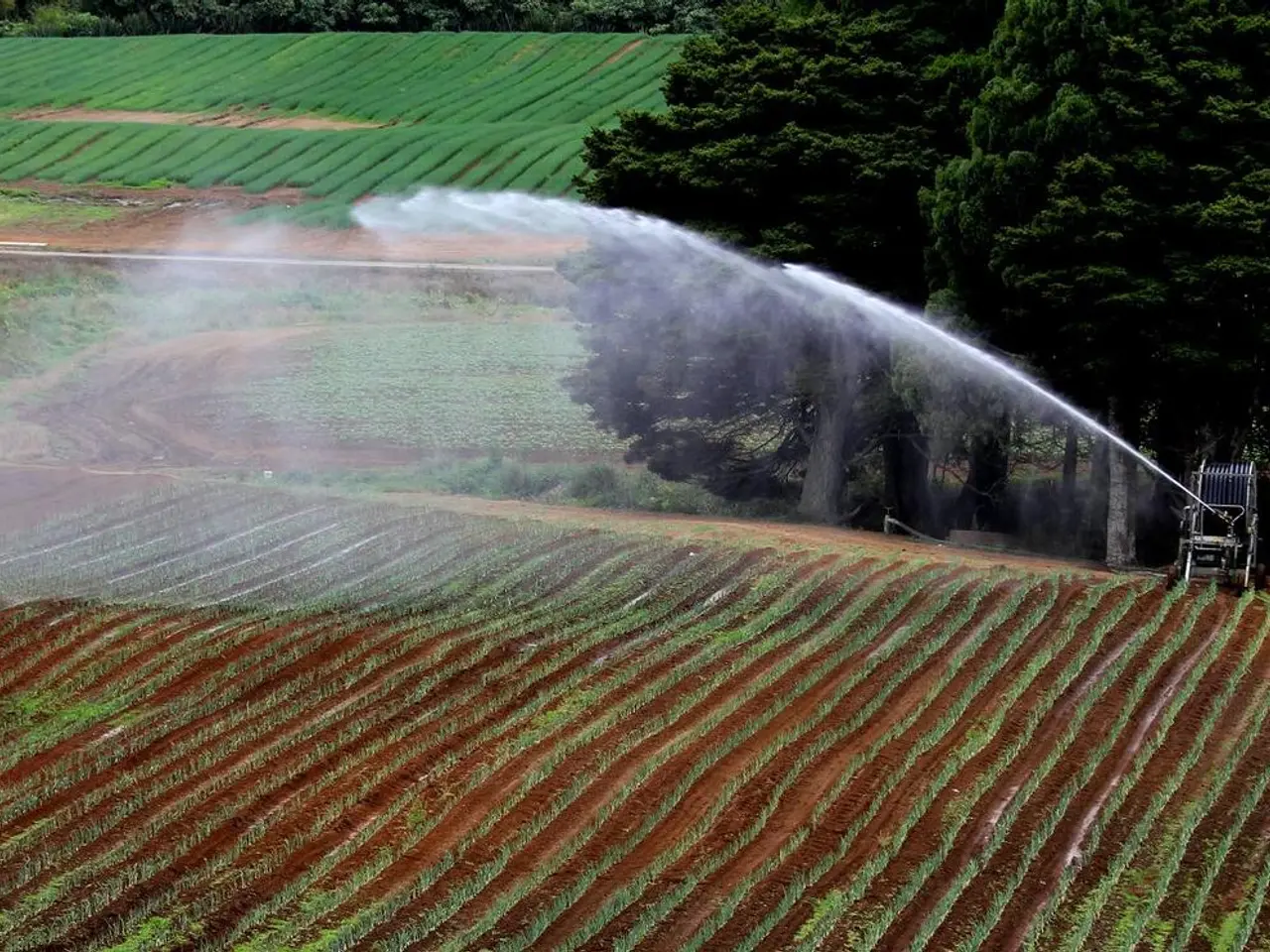Seventeen Innovative Rain Garden Concepts for Preventing Yard Flooding
Rain gardens, once a niche landscaping solution, are gaining popularity as more homeowners and communities recognise their potential to manage stormwater effectively while enhancing property aesthetics. These water-wise gardens offer a unique blend of function and beauty, making them an attractive choice for both eco-conscious and design-focused individuals.
A tiered rain garden design, for instance, maximises water management and visual appeal by creating multiple levels. By arranging terraces with stone or timber retaining walls and natural barriers like logs and boulders, homeowners can effectively capture runoff on sloped terrain, prevent erosion, and slow water flow. This design also allows for layered planting based on moisture levels, enhancing infiltration and reducing runoff while adding dramatic visual appeal.
Edible rain gardens are another innovative design, growing water-loving edible plants like taro, watercress, and blueberries. For those who wish to take their sustainable gardening to the next level, these gardens provide a practical solution for growing food while managing stormwater.
Butterfly-attracting rain gardens can include nectar sources and host plants to attract adult butterflies and their caterpillars. Such plant choices increase biodiversity, improve soil health, support pollinators, reduce erosion, and provide seasonal colour and texture.
For a more formal aesthetic, a formal rain garden design can incorporate symmetrical layouts, defined edges, and carefully selected plants arranged in patterns. This design works particularly well in traditional landscape settings, offering a harmonious blend of form and function.
Container rain gardens offer a compact solution for small yards, patios, or balconies. These miniature gardens, filled with moisture-loving plants, are a great way to enjoy the benefits of a rain garden in limited spaces.
Japanese garden principles align perfectly with rain garden functionality, emphasising harmony with natural water flow and thoughtful plant selection. A decorative bridge adds charm and functionality to larger rain gardens, providing a focal point and practical access.
A circular rain garden design creates an elegant solution for managing water while serving as a landscape focal point, with water spreading evenly throughout the garden basin. This design is particularly effective in capturing and absorbing excess water, preventing flooding and eroding soil.
Stone borders in rain gardens help contain soil and mulch during heavy rainfall, preventing erosion and maintaining the garden's shape. Stepping stones provide practical access through a rain garden while adding visual appeal, with flat, stable stones placed strategically to avoid compacting soil.
A shade-loving rain garden focuses on plants naturally adapted to both shade and periodic wet conditions, typically found in woodland understories. Mediterranean plants tolerate both dry periods and occasional flooding, making them suitable for rain garden edges.
A rain garden with seating provides a place to enjoy the beauty of the water-wise garden. A recirculating water feature can be added to a rain garden, operated by a small solar-powered pump during dry periods, creating gentle movement and the sound of trickling water.
Lastly, it's important to note that rain gardens filter pollutants and provide habitat for beneficial wildlife. By choosing the right design and plants, homeowners can create a rain garden that not only beautifies their property but also supports local ecosystems and promotes biodiversity.
In conclusion, creative rain garden designs vary widely, each offering unique benefits for stormwater management, aesthetics, and ecological support. By considering factors like landscape slope, soil type, and water flow patterns, homeowners can choose the right design to suit their needs and create a functional and beautiful rain garden that serves both environmental and aesthetic goals.
A homeowner might opt for a home-and-garden design that incorporates edible plants in their rain garden, allowing them to enjoy a sustainable lifestyle while growing water-loving fruits like blueberries and vegetables such as taro. Furthermore, for individuals who appreciate both design and gardening, a formal rain garden's symmetrical layout and carefully selected plants could appeal to their home-and-garden lifestyle preferences.




